11/16/06 ~ Great Wall Trip continued
On the Rio: Keb Mo' ~ Victims of Comfort
After descending the Great Wall, we were met by our driver to take us back to Simatai. Here's the phone number for anyone who wants to make a reservation.
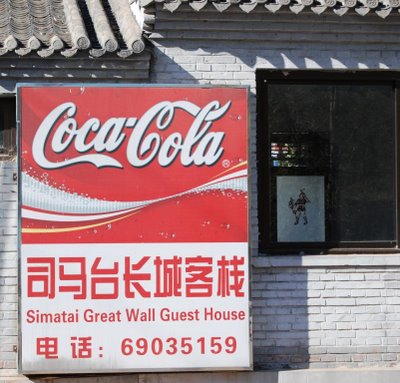
I was exhausted and ready for a nap before dinner. My room was the one in the middle (my guide was to my left and my driver to was my right).
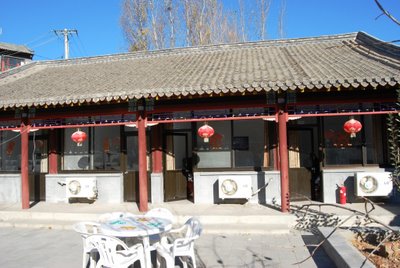
Don't let the sunshine deceive you. The temperature was about 40 degrees Fahrenheit and got down into the 30s at night. The heating system left a little to be desired. As did the bathroom (especially compared to the high-tech Tokyo bathroom I had the weekend before!)
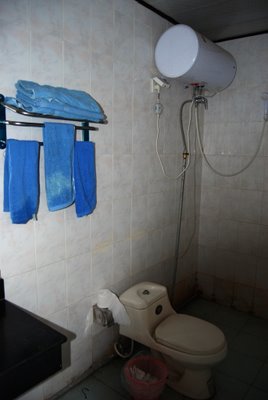
But not to worry. After a delicious dinner of spicy pork and green beans, sweet & sour pork, and sauteed egglplant with rice, I returned to my room where a large thermos (knee-high) of hot water was delivered so I could take a soothing sponge bath. Then I crawled under the blankets and watched a little tv (the NBA Cavs-Celtics game was on) and got ready for the next day's hike.
The hike for Day 2 was at Gubeikou, about a 40 minute drive away. The main part of today's Gubeikou Wall was constructed under the supervision of Xu Da, a noted general in the Ming Dynasty. It runs for more than 20 kilometers and has 143 beacon towers, each positioned at an average interval of 156 meters. The nearest two are only 30 meters apart. The inside of these towers varies in design. While some have a flat ceiling, others either have an arched ceiling, a domed ceiling, or an octagonal, painted ceiling. Each tower has two floors, six archways, and ten arched doors, allowing garrisoned soldiers to advance and retreat freely. The towers are also different in size. The largest one can accommodate a garrison of 100 soldiers, and the smallest one a garrison of 10 soldiers. The towers often have one to six portholes.
My goal: to reach the peak.
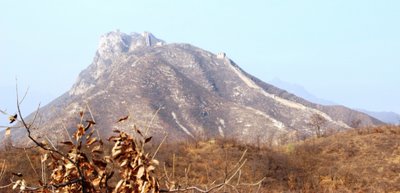
The first point of interest was the Brick Kiln. 
During the Ming Dynasty, tile firing and brick manufacturing increased. So the ledge walls were mostly built with bricks. But between the bricks stones from the mountain were used as filler (unfortunately, so were the corpses of those who did not survive the building of the Great Wall - I half expected to find bones along the pathway.)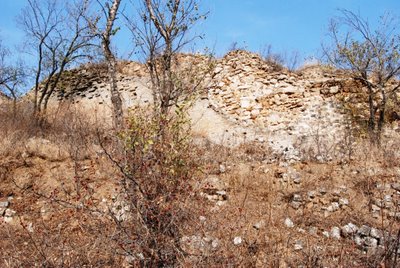
Mao said that everyone should come to the Great Wall at least once, and after doing so will be a hero. My guide, Crystal, and I joked that with as much time we were spending on the wall we were either crazy or superheros. This is about 1/2 way.
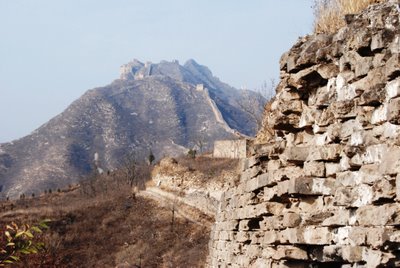
All of sudden we came across a train track that had been built into the mountain under the Great Wall. Most "modern" cities and highways have been built only in areas where the Great Wall was completely collapsed.
And then, lost in thought, we were suddenly at the top!
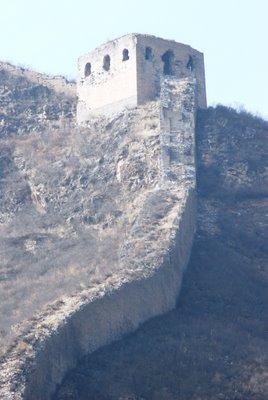
The entire roundtrip journey took just under 4 hours.

On the way back down, we sat on the Wall for almost 40 minutes, listening to the wind, thinking of nothing but being in the Now (how Zen-like) and imaging what it would have been like hearing the Mongol warriors advancing.
Maybe it was the altitude, or just the freshness of the air, or physical exhaustion, but for those few moments, Life stood still and I felt fluid with nature.
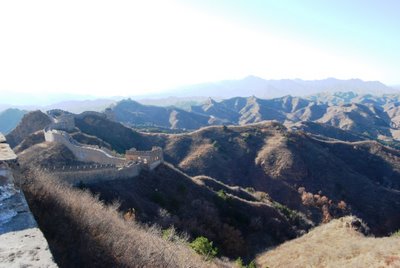

<< Home